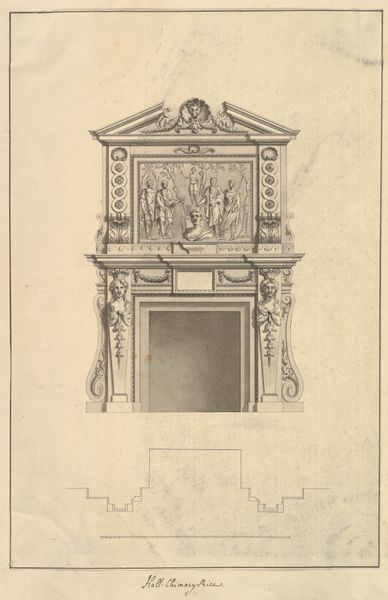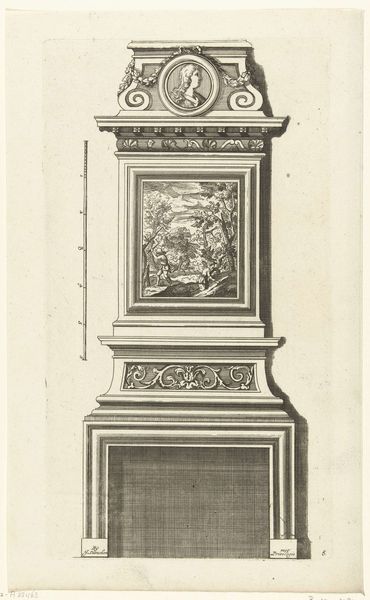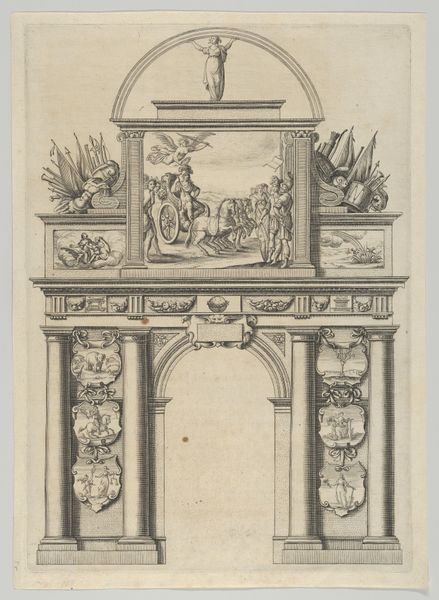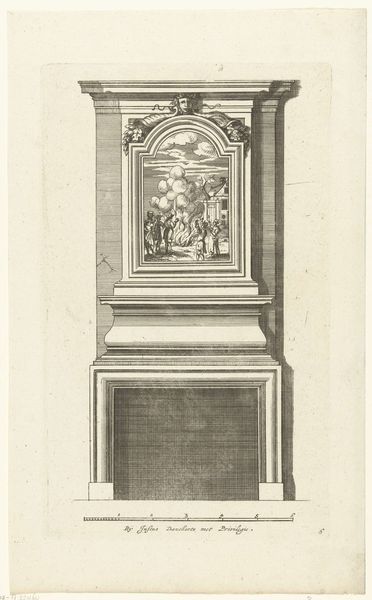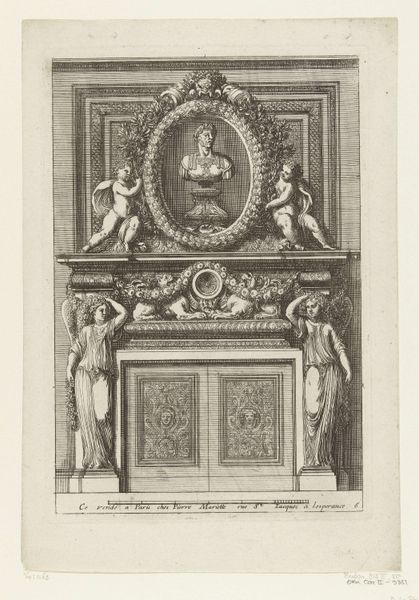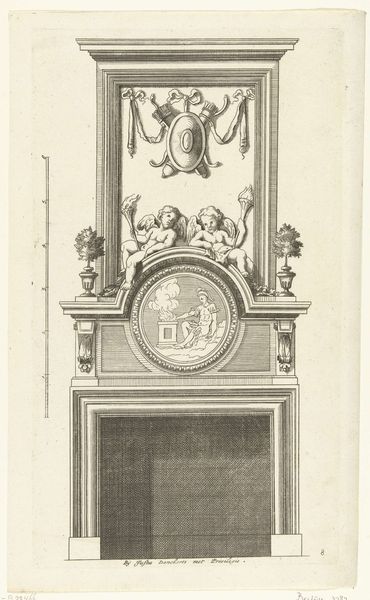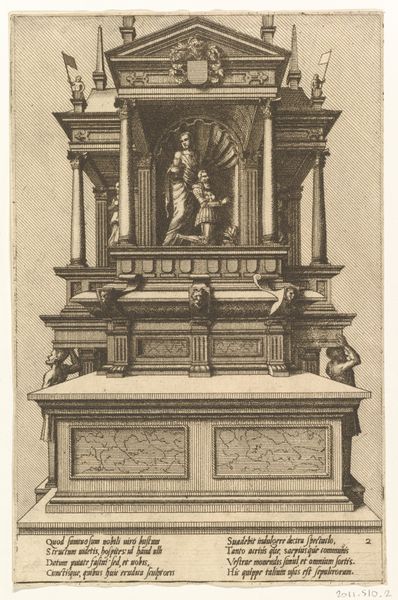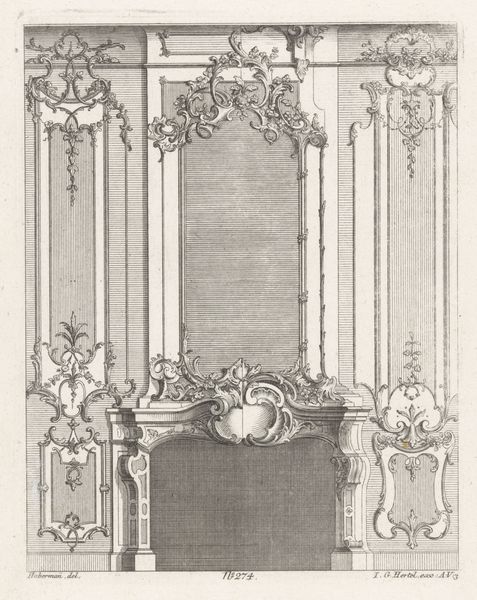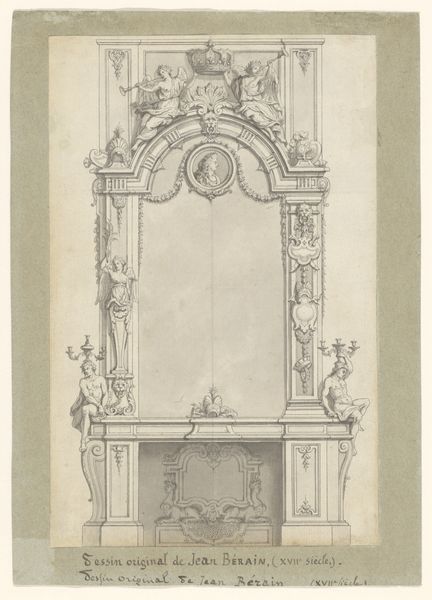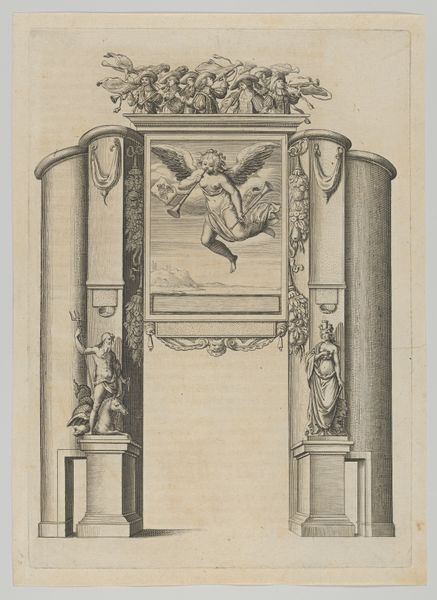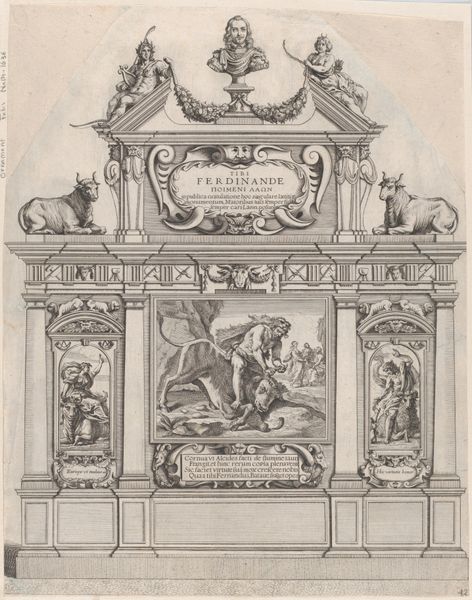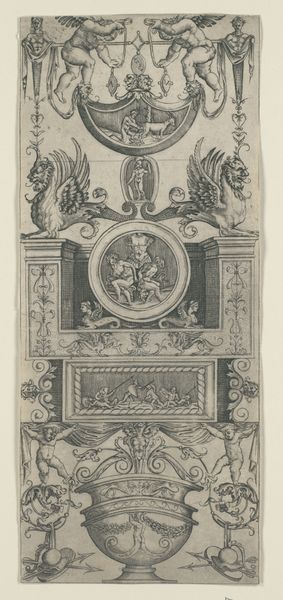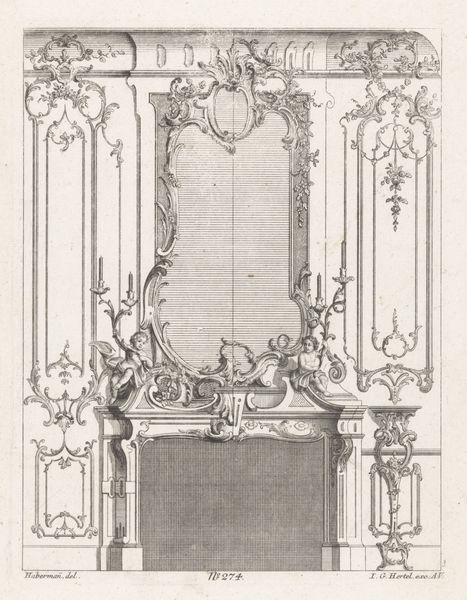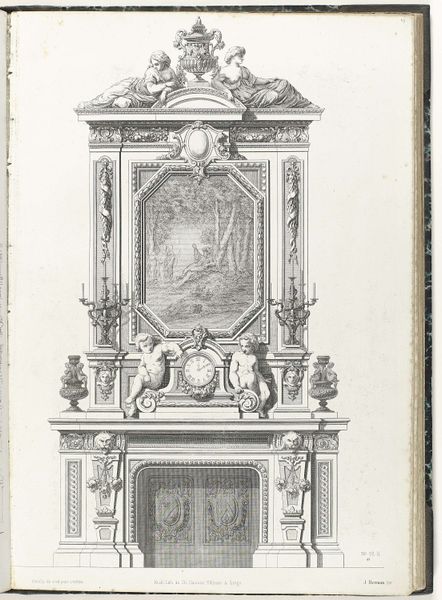
drawing, print, engraving, architecture
#
drawing
#
neoclacissism
# print
#
engraving
#
architecture
Dimensions: height 362 mm, width 224 mm
Copyright: Rijks Museum: Open Domain
Curator: This print, created in 1763 by Jean François de Neufforge, depicts a fireplace design entitled "Schouw met beschilderd paneel," housed here at the Rijksmuseum. The rendering is quite precise. What strikes you most about it? Editor: Initially, it's the overwhelming sense of classical grandeur and a very controlled, almost rigid aesthetic. The figures and ornaments feel very posed, distant, almost staged in a world of their own making. It looks like a perfect performance, with limited intersectionality. Curator: You are correct, its Neoclassical. But look at how Neufforge is working with historical narratives! It would have been deeply impactful. Can you tell me your reading of the scene at the top? Editor: Yes, I see the figures now; there’s a central figure in classical robes speaking to a small gathered group. It projects an aura of male authority, maybe leadership in some regard. Perhaps we are supposed to see a story of class dynamics within that historical scene? Curator: Indeed! In this design, the scene from antiquity—possibly a philosophical or historical moment—is used to elevate the domestic space, bringing intellectual and historical weight into the home. I imagine its purpose as less of the functional kind and more like an exercise in cultural gatekeeping. Editor: Cultural gatekeeping. So it is using imagery as a symbol of wealth and social rank! Even today it still creates conversation; I wonder, do we allow art to perform its social role now? Does it have an equal impact or more insidious implications? Curator: Precisely! We could explore the modern parallels between art, social status, and representation all day. In revisiting these pieces, it reminds me just how powerful these older modes are in continuing our intersectional work with present artworks. Editor: I agree! Thanks to understanding its role and context we can further look at those modern parallels and explore how to make that knowledge as equally distributed as possible.
Comments
No comments
Be the first to comment and join the conversation on the ultimate creative platform.
